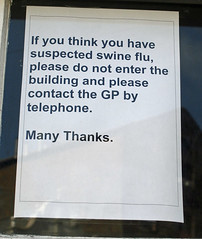This is the fourth part in a four part series looking at the extraordinary popularity of the vampire genre, Dracula being the subject of more films than any other fictional character. The four parts are:
- One hundred years of vampire films looks at the longevity of the vampire genre, the box office takings of some of the recent major vampire movies, and the surge in interest in the vampire genre over the last 10 years.
- Vampire origins: the price of immortality examines how the vampire genre prods our sensitivities about death and aging, and builds on a wealth of known Christian religious symbolism.
- Vampires selling unsafe sex? looks at the thinly-veiled, yet Rated-M sexual metaphors of the vampire genre and the way it has tracked the sexual interests of various generations, from the Victorian period to the swinging Sixties, and the recent focus on adolescence and virginity.
- Vampirism ‘the bloodborne disease’ focuses on the recent medicalization of vampire stories and the zombie/vampire crossovers, paralleling popular fears of bloodborne diseases like hepatitis and AIDS.

The double nature of vampirism as both disease and sexuality metaphor ties it in with diseases associated in the popular consciousness with initimate sexual contact. In the last couple of decades AIDs diagnoses peaked in 1991/1992 and AIDs deaths in 1994 in the US. Looking at more major English language vampire films there were 36 in the 80s and 53 in the 90s. Many major AIDs public health awareness campaigns, some of which may now seem a little over the top, began in many countries in the late 80s.
HIV, hepatitis and herpes
HIV, and hepatitis are both bloodborne diseases with many similarites. Heptatitis mutates during viral replication, making it difficult for the body’s immune system to combat it. This allows the virus to
establish and maintain persistent infection, which can go undiagnosed until severe liver problems emerge possibly 20 to 30 years later.
Hepatitis C was identified around 1989 (for which no vaccine is yet possible) and the first vaccines for Hepatitis B were being tested in the 80s. 1982 also saw awareness of herpes peak with Time magazine running a lurid cover story “Herpes: The New Scarlet Letter” and it’s estimated that around 18% of the US population is HSV-2 infected (the type associated more often with genital herpes) although many are asymptomatic.
TB and the plague
One of the likely reasons for the rise and rise of the vampire genre are the close parallels with the fear of these various diseases in the popular consciousness (albeit with a time lag by the time a book or film is written and produced). Even going right back to Victorian times tuberculosis struck with people having little knowledge of the cause and victims gradually wasted away, fitting in well with the vampire myth and the plague was also associated with the activities of vampires.
Vampires as medicalized horror
As well as appealing to our more prurient interests, vampire movies are horror movies after all, despite the rich vein of satire they’ve provided for comedians like Mel Brooks and Eddie Murphy.
The disease of the blood relationship is explicitly picked up by vampire/zombie crossover films like I Am Legend (2007), 28 Days Later (2002) and it’s 2008 sequel 28 Weeks Later and other zombie/vampire type meldings, and you can also see explicit medicalization of vampirism in the tremendously successful box office hit Blade (1998), Underworld (2003), Ultraviolet (2006) and Daybreakers (2009).
Even back in 1992 in Coppola’s Dracula you see the blood transfusions being given to Lucy and in Near Dark a vampire is cured by transfusions.
Invulnerability, viruses and puncture wounds
Arguably for most people viruses are something that we do not understand on a mechanical level, and that we know often can’t be medically treated, making the the viral nature of vampirism both vaguely plausible and more frightening.
About 10% of the population are also needle-phobic (‘trypanophobic‘) and interestingly it is more common in men than in women which might help account for the ability of the genre to genuinely scare. There are both genetic explanations for fear of punctures (in the past puncture wounds were often fatal because of the prevalence of infection and no antibiotics) as well as more psychological explantions (the skin for men being a barrier to the self and it’s breach being shocking and unsettling).
![]() Perhaps in a reaction in some of the more recent caring/sharing thoughtful vampire figures expressed in Rice’s or Meyer’s novels some more recent films have made vampires back into Nosferatu-style other-world beings again, for example 30 Days of Night (2007) where they act more like wild animals and have Alien-like double rows of teeth, and Rise (2007)with Lucy Liu is also much blacker.
Perhaps in a reaction in some of the more recent caring/sharing thoughtful vampire figures expressed in Rice’s or Meyer’s novels some more recent films have made vampires back into Nosferatu-style other-world beings again, for example 30 Days of Night (2007) where they act more like wild animals and have Alien-like double rows of teeth, and Rise (2007)with Lucy Liu is also much blacker.
Don’t turn your back: the vampire genre gets off the floor just
when you think the audience can’t take any more
In 100 years time the vampire genre may even be regarded as one of the C20th’s most enduring cultural outputs). Expect more in this ‘vein’: vampire hospital, vampire rock band (Oh wait that’s already been done), vampire psychiatrist, vampire children, vampire football league, vampire western. This genre has a lot of life in it yet.
It will be interesting to see which fiction series will form the next vampire cinema blockbuster or TV series. Place your bets below.
This article filed under the following 'Interest' categories (click category for more) Cliche watch, Unanswerable questions


